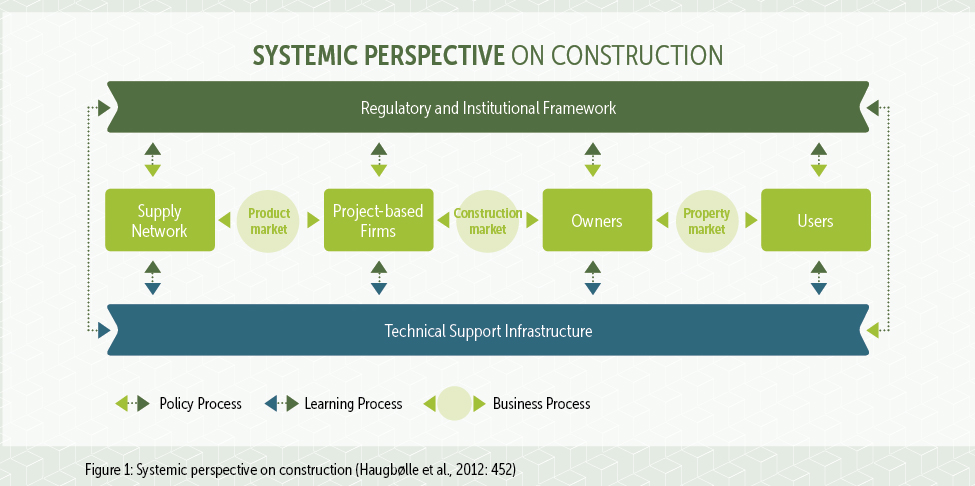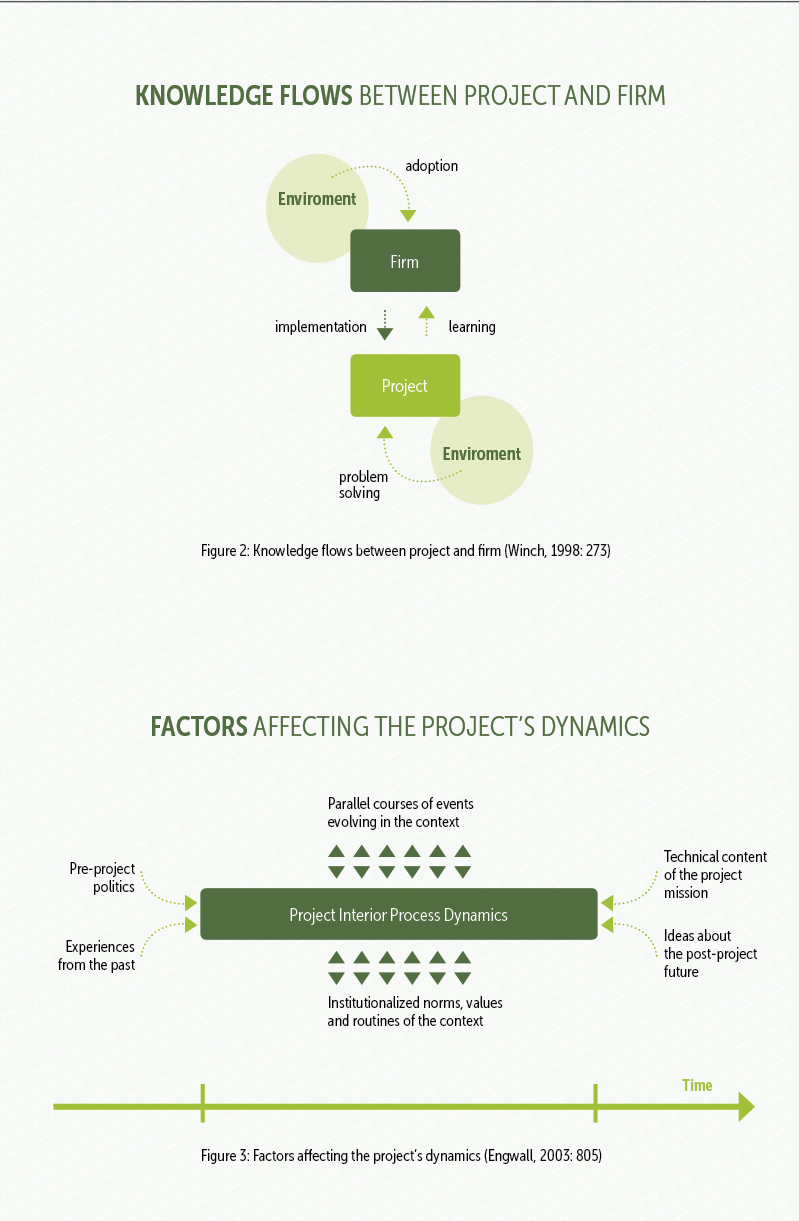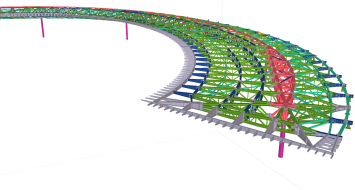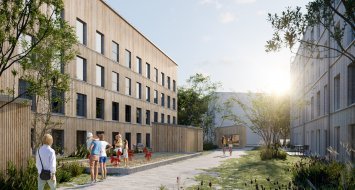
Changing construction: Perspectives on knowledge and learning
ma syysk. 25 15:52:00 2017
The problem of knowledge in construction is not just about knowledge, but about learning and about putting knowledge into action in order to change practices. This paper will use the Danish knowledge system as a case study in order to analyse where and why problems with regard to knowledge occur in construction.
This paper suggests that an analytical framework to understand knowledge and learning within construction should: 1) adopt a systemic perspective on construction and refurbishment, 2) highlight the absorptive capacity of firms as a crucial concept for adopting new knowledge, 3) be sensitive to the historicity and path-dependency of the individual construction project, 4) embrace communities of practice as the key framework for learning; and 5) manage the recurrent changes in knowledge types during construction projects, notably from tacit to explicit knowledge and vice versa.
Based on this analytical framework, this paper has in broad terms analysed how the various Danish policy studies of the knowledge system have articulated the problem of knowledge in construction, identified how these articulations become controlling of the corresponding solutions, and pointed out some of the shortcomings as a result. With these insights in mind, it is the hope that future studies and public policies will adopt a more reflexive and reflective approach to the problem of knowledge in construction.
This is a summary article based on an original contribution published in the proceedings of CIB World Building Congress 2016, Vol 3 pp. 57-68
The problem of knowledge in construction
A systemic perspective
Gann and Salter (2000) adopt a systemic perspective on construction, where innovation must be understood in the context of both the technological support infrastructure for producing knowledge and the regulatory and institutional environment.
The individual elements of the system are connected to each other through flows of knowledge. Haugbølle et al. (2012) has developed Gann and Salter (2000) systemic perspective to also explicitly include the building users and suggest that links between the individual element can predominantly be understood as business processes between actors in three different types of markets, learning processes and policy processes (see Figure 1).
A systemic perspective on the problem of knowledge as mentioned above indicates that it is far too narrow to focus on the dissemination from knowledge institutions. A systemic perspective would rather suggest that the problem of knowledge can be found in four different locations:
- The interaction between the political-institutional apparatus on one side and business as well as users on the other side.
- The interaction between the individual companies and its customers throughout the entire supply chain spanning three separate markets of products, construction and property.
- The interaction between knowledge institutions and each of the business actors – supply network, project-based firms, owner and users of buildings.
- The capabilities and interaction within each of the individual units.

Firm versus project: Absorptive capacity
Especially the capabilities and interaction within each organisation has often been neglected in Danish policy studies, even though this is central to a firms ability to adopt new knowledge. A central key concept in this context is absorptive capacity. Cohen & Levinthal (1990: 128) defines this ability to absorb knowledge in the following way:
In project-based industries like construction, the absorptive capacity is not solely linked to the firm as such, but as well to the often many projects being managed by the firm simultaneously and over time. Hence, the interplay between the firm as the basis and the individual projects as well as across projects is crucial for understanding and dealing with the problem of knowledge in construction. In his earlier work with innovation in the project-based organisations of construction, Winch (1998) has suggested the following model for different types of knowledge flows between the project, the firm and the surroundings of both (see Figure 2).
The model is a reminder that the problem of knowledge must be addressed along at least three dimensions:
- External to the firm – either horizontally in networks with like-minded people for example within the same profession or vertically in networks across disciplines.
- In-between the individual projects and the firm.
- Within the project between the respective project participants, but external to the firms involved in a project.
- What the model however fails to acknowledge is the need to address the knowledge flows taking place between different projects either simultaneously in time or consecutively over time.
No project is an island: Historicity and path dependency
Projects are not only vital for both new construction and refurbishment but the very organising principle of construction firms. The uniqueness of projects is often used as an explanation for why it is difficult to share knowledge and create change in construction. Despite the widely held assumption of projects being both unique and isolated events, projects are not isolated islands as Engwall (2003) points out. Instead projects are embedded in an organisational context and with a historicity marked by previous projects, parallel courses of events and ideas about the post-project future.
Following Engwall (2003), knowledge in projects is not isolated or necessarily unique, but is tied up on experience from previous projects as well as project-independent factors such as general business policies that go beyond the individual project. In this way, previous experience and general policies creates a path dependency that sets the scene for future projects (Figure 3).
In most Danish policy studies there is a strong rhetoric on the project-based nature of construction and the barriers to knowledge and change created by this very nature. However, a range of possible interventions related to the contingencies influencing the interior process dynamics of a project tend to be ignored. While these contingencies may be overlooked in policy studies, some of the major Danish consulting firms and contractors now attempt to address these in their internal training and course activities on management. But management and learning within and across projects is only side of the knowledge problem in construction. Another side of the problem is related to how trades and professions operate and are organised.
Learning: Communities of practice
Collaboration, knowledge-sharing and learning across the many trades and professions within construction is notoriously challenging as have been recognised by several (see e.g. Christensen, 2008 and Thuesen, 2007). But these shared communities of practice within trades and professions also hold strong a potential for being a part of the solution to (part of) the problem of knowledge in construction.
With regard to innovation and change management, the problem of knowledge in Danish construction projects is not only a matter of learning new things, but also to unlearn. The ability to discard knowledge – where appropriate – is also an important aspect of communities of practice, although this is often overlooked.
Knowledge and learning across communities of practice like trades and professions within construction presents challenges because of the very characteristics that are also their strengths, i.e. the internal autonomy of the communities, their informal nature, and not least their differences in prevalence of knowledge types.

Tacit versus explicit knowledge: Repeated shifts
The construction process is typically characterised by the involvement of several firms and trades, which implies numerous and repeated shifts between tacit knowledge and explicit knowledge. The ability to handle these shifts in order to accumulate, disseminate and apply knowledge in practice is probably one of the construction industrys main challenges with regard to knowledge. As pointed out bluntly by Danish practitioners: First, the client must articulate his tacit and more or less explicit knowledge about his needs for a new building. The consultant then turns these into to explicit knowledge in the shape of formal documents such as drawings and specifications. This explicit knowledge is then being adopted and adapted to tacit knowledge, which is the primary knowledge base among the craftsmen in construction companies. Finally, the actual building will be managed by building caretakers based on their mix of explicit and tacit knowledge on caretaking of that particular building, and it will be measured against the more or less tacit knowledge of the end-users of how appropriate the services delivered by the building suits their needs.
Conclusions
This paper has provided a brief exploration of an extensive number of Danish policy studies and initiatives on knowledge and learning in construction over the past two decades.
The paper outlines an analytical framework to understand knowledge and learning within construction. This paper suggests an analytical framework that: 1) adopt a systemic perspective on construction, 2) highlight the absorptive capacity of firms as a crucial concept for adopting new knowledge, 3) is sensitive to the historicity and path-dependency of the individual construction project, 4) embrace communities of practice as the key framework for learning; and 5) manage the recurrent changes in knowledge types, notably from tacit to explicit knowledge and vice versa.
Based on this analytical framework, this paper has in broad terms analysed how the various Danish policy studies of the knowledge system have articulated the problem of knowledge in construction, identified how these articulations become controlling of the corresponding solutions, and pointed out some of the shortcomings as a result. With these insights in mind, it is the hope that future studies and public policies will adopt a more reflexive and reflective approach to the problem of knowledge in construction.
Text: Kim Haugbølle,
Danish Building Research Institute, Aalborg University
References
Christensen, R. M. (2008). Development Practically Speaking - Learning Processes in the Danish Construction Industry. Aalborg: Department of Production, Aalborg University. PhD thesis.
Cohen, W. M. & Levinthal, D. A. (1990). Absorptive Capacity: A New Perspective on Learning and Innovation, Administrative Science Quarterly, Vol. 35 (1), 128-152.
Engwall, M. (2003). No project is an island: linking projects to history and context. Research Policy, Vol. 32, 789-808.
Gann, D. M. & Salter, A. J. (2000). Innovation in project-based, service-enhanced firms: The construction of complex products and systems, Research Policy, Vol. 29 (7-8), 955-972.
Haugbølle, K. & Clausen, L. (2002). Kortlægning af bygge/boligforskningen i Danmark. Hørsholm: Statens Byggeforskningsinstitut.
Thuesen, C. L. (2007). Anvendelse af den rette viden - et studie af byggeriets kulturelle organisering. Lyngby: Department of Civil Engineering, DTU. PhD thesis.
Winch, G. M. (1998). Zephyrs of creative destruction: understanding the management of innovation in construction, Building Research & Information, Vol. 26 (5), 268-279.
Rakennustekniikka on RIL ry:n julkaisema lehti.
Suosituimmat

Suunnitteluprosessin tehostaminen parametrisella suunnittelu...
Parametrinen suunnittelu on osa nykyaikaisen suunnittelutoimiston työkalupakkia.

Inflaatio heiluttaa rakennusalaa, ja esimerkiksi asuntoaloitukset tippuvat vuoden takaises...


